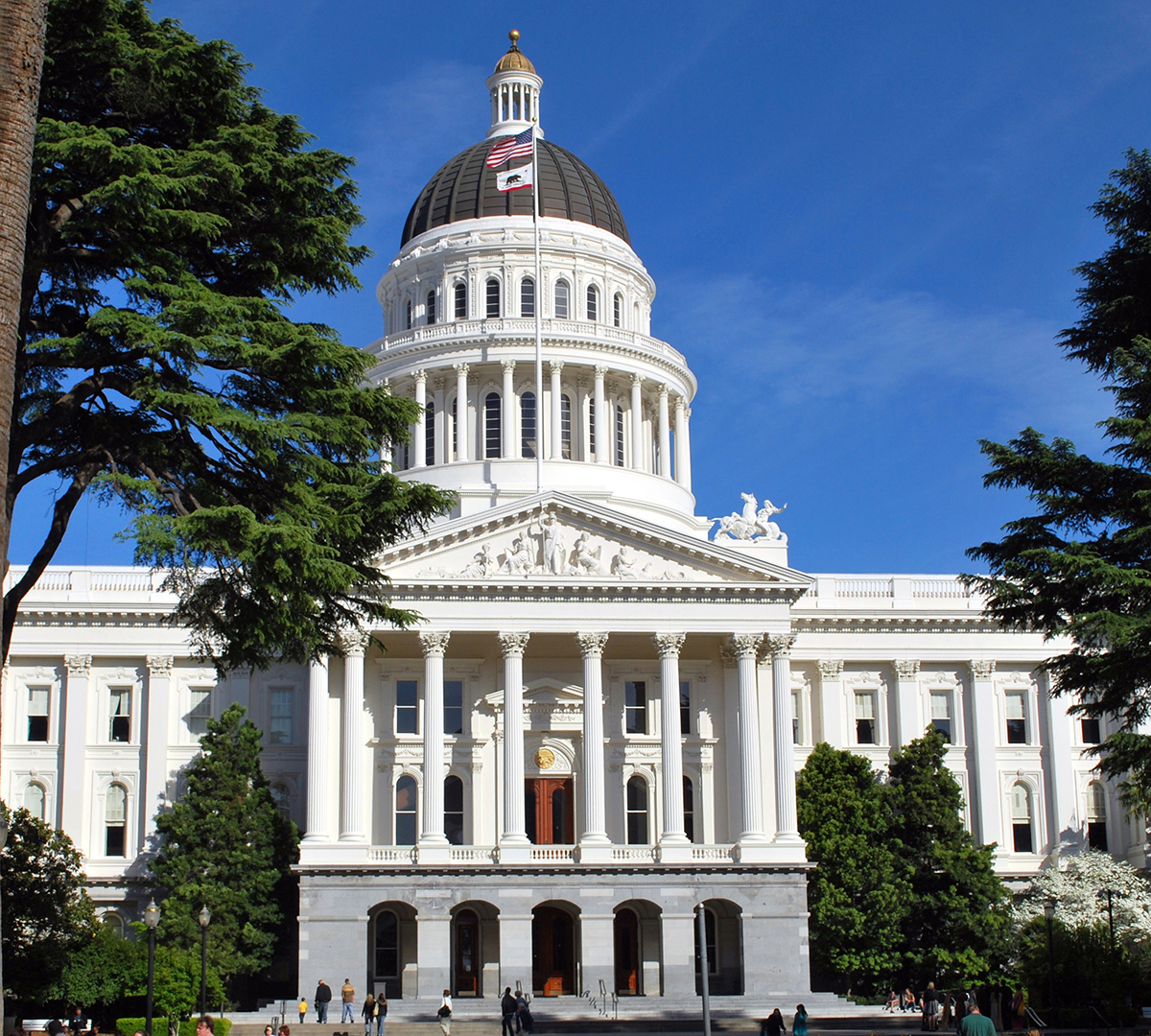When Gov. Leland Stanford was inaugurated on Jan. 10, 1862, he didn’t walk to the state Capitol, nor did he take a carriage. Instead, he got into a small boat and rowed from the governor’s mansion to the Capitol steps.
The Great Flood of 1862 is something that anyone interested in California history should know. Like what was described in the Genesis Flood, Californians experienced 40 days and nights of rainfall, while record snows fell in the Sierra Nevada and Cascades. While this flood did not cover the whole Earth, it did cover a huge portion of California’s Central Valley, creating havoc where it went and sending the state Legislature to San Francisco to carry out its duties.
The damage was extensive. Flooding killed about 4,000 people, wiped out a quarter of the state’s cattle, bankrupted the state government, destroyed one-third of the state’s property and even drove the price of a dozen eggs to $3, equivalent to about $80 today. While California has experienced its share of natural disasters since then, not even its most notorious earthquakes have done the same amount of damage.
According to the climate modeling firm First Street, Sacramento is likely to have another major flood, this one due to climate change. The 1862 flood came right after the Little Ice Age ended, so it is doubtful that one could blame it on climate change. In fact, it came when average temperatures were cooler than they are now.
The idea behind the First Street warning is that increased temperatures will lead to extreme weather patterns such as the heavy rains that caused massive flood damage in Western North Carolina and East Tennessee last September. On the other hand, these climate models also claim that we will see worse droughts and higher summer temperatures, which would lead to an increase in wildfires.
Whether Sacramento has floods in the future is just a matter of time, as the city has suffered major flooding on a semi-regular basis since 1850, when it flooded, prompting a mayoral candidate to promise a levee system on the Sacramento River, according to the Sacramento Bee: “As the Native people predicted, the fledgling city of Sacramento flooded in 1850, prompting a candidate for mayoral office, Hardin Bigelow, to run on a platform of building levees. He won the race to become the first elected mayor of Sacramento, and he immediately started construction.”
While the Central Valley has not seen anything to match the 1862 catastrophe, nonetheless there have been major floods since then, including the years 1907, 1955, 1964, 1986, 1995, 1997, 2006 and 2017. In 2023, heavy rains and snowfall in the Sierras, while not providing major flooding, did recreate Lake Tulare in the southern part of the San Joaquin Valley, which had been a “ghost lake” because its waters had been drained for agriculture.
Even with all the flood control systems from dams to levees, the Central Valley—and Sacramento—have been historically prone to flooding, including during the eras when no one spoke of climate change or global warming. While First Street and other climate modeling entities are trying to assess an uncertain future, they also are making assumptions about future weather events that likely are exaggerated.
First, and most important, every severe weather occurrence now is portrayed in the media as caused by climate change. Yet, the harshest weather events to have hit the United States happened long before the modern climate change era. Californians have seen nothing close to the flood of 1862, and it happened just 12 years after the Little Ice Age had ended, when the Earth was cooler than it is now. And, of course, the state and federal government have since built the massive State Water Project and Central Valley Project, which not only provide water, but flood control.
As for flooding, the most destructive flood in U.S. history was the 1927 Mississippi River Flood, which caused about $1 billion in damages (1927 dollars) and killed an estimated 500-1,000 people. Note that no climate scientist or anyone else has claimed that the Mississippi River Flood was caused by climate change, yet if a flood of that magnitude were to happen today, one can be assured that all the blame would be laid upon climate change and, of course, the burning of fossil fuels.
Likewise, the climate change issue also has centered on wildfires in California, which have wiped out entire towns like Paradise in 2018, which was the victim of the Camp Fire. However, to understand modern wildfires, one must first recall the Big Burn of 1910, which consumed 3 million acres of western forests in just two days. Unfortunately, the U.S. Forest Service decided to pursue a fire-suppression policy that ultimately left the dry western woodlands even more vulnerable to conflagrations.
While there is no doubt that the Earth’s climate is warming, the predictions of doom seem overblown. From Paul Ehrlich’s warnings of a “population bomb” in 1968 to claims that acid rain would destroy America’s lakes, streams, and forests, to the short-lived “global cooling” panic of 1975 to today’s climate change concerns, Americans have been bombarded with environmental doom stories for nearly 60 years. Urbanists in particular like to predict doom as justification for some of their more draconian land-use preferences.
Yes, the 1862 flood could be repeated, one of our volcanoes can erupt, and most likely there will be huge wildfires, given the land mismanagement that has been official policy of both the U.S. Government and the state of California for more than a century. Surely, there will be earthquakes, maybe even “The Big One.” But it is quite doubtful that we are going to see millions of “climate refugees” in California. If the natural disasters in this state have not driven out people yet, it is unlikely they will do so in the future.
William L. Anderson is an editor with the Mises Institute and Emeritus Professor of Economics at Frostburg State University, Frostburg, Md. He lives in California.

